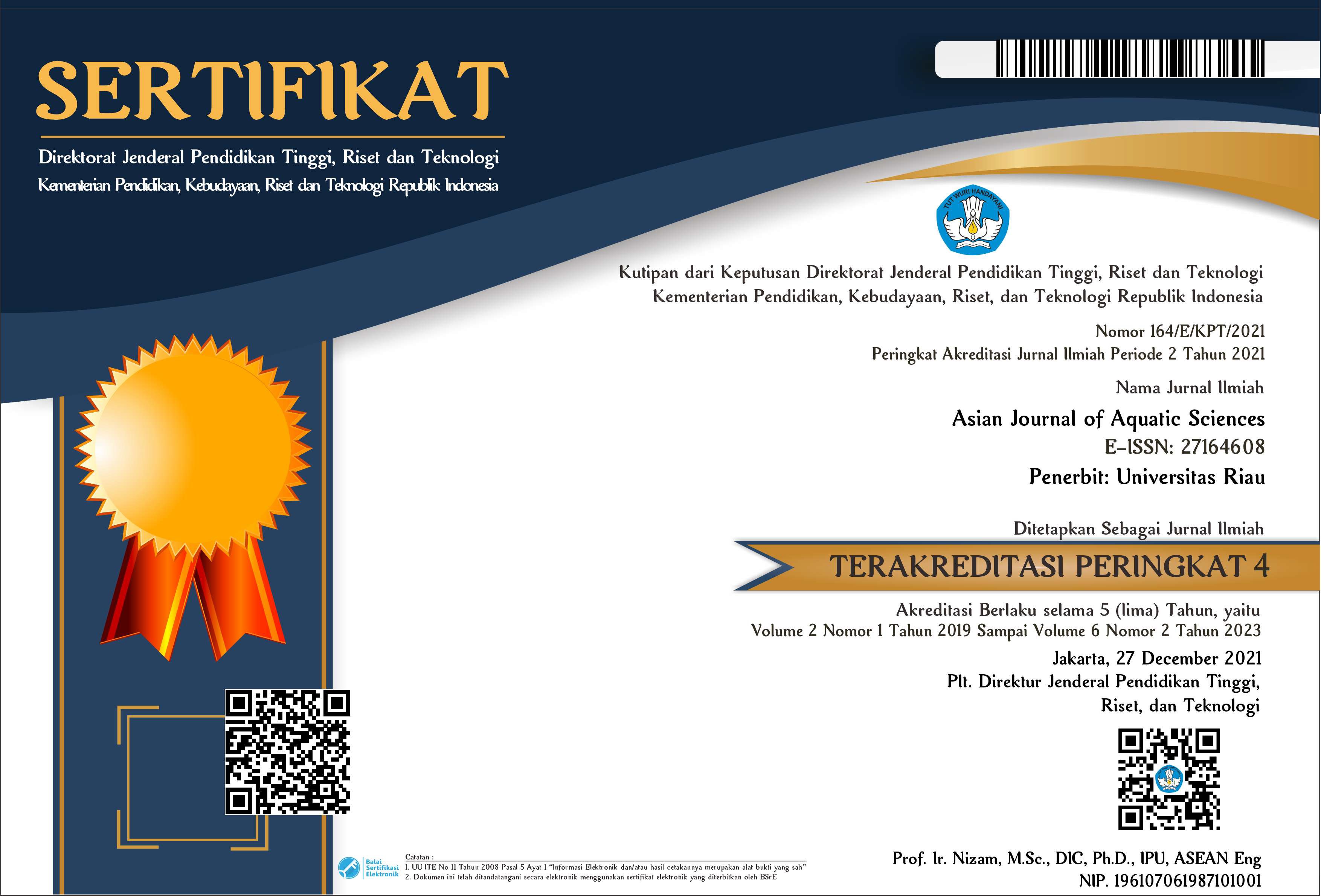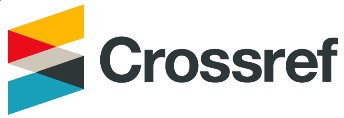THE EFFECT OF TOPOGRAPHICAL DIFFERENCES ON THE GROWTH OF KOI CARP (Cyprinus carpio koi)
Abstract
Interest in the cultivation of koi carp commodities has increased during the Covid-19 pandemic. Breeders come from various communities. This study aims to determine whether topographic differences have an effect or not on the growth of koi carp. The research was conducted from February to March 2022 for 45 days. The location of the research was carried out in three different places, Kaliangkrik, Tempuran, and Kebumen. The research method used was a Completely Randomized Design (CRD) with 3 treatments and 3 repetitions. The first treatment is an altitude of 1,030 meters above sea level (Kaliangkrik), the second is 323 meters above sea level (Tempuran), and the third is 26 meters above sea level (Kebumen). The data were analyzed using the Analysis of variance (ANOVA) followed by Duncan's Multiple Range Test (DMRT) further tests. The results showed that topographic differences affect the growth of koi fish both in weight and length growth of koi fish. The altitude that produces the best growth in this study is at an altitude of 26 meters above sea level or located in Kebumen. This is supported by the data showing the highest weight (average 4,1 g), the longest (average 2.5 cm), the lowest FCR (average 2,16), and the highest Survival Rate (SR) high (80%)
Downloads
References
[DJPB] Direktorat Jenderal Perikanan Budidaya. Laporan Kinerja 2020. Jakarta: Direktorat Jenderal Perikanan Budidaya Kementerian Kelautan dan Perikanan. 2020.
Sutiana., Erlangga., Zulfikar. Pengaruh dosis hormon rGH dan tiroksin dalam pakan terhadap pertumbuhan dan kelangsungan hidup benih ikan koi (Cyprinus carpio L). Acta Aquatic, 2017; 4(2): 76-82.
Kusriningrum, R. Perancangan Percobaan. Universitas Airlangga. Surabaya. 2012; 43-63
Supono. Manajemen Lingkungan Untuk Akuakultur. Plantaxia. Yogyakarta. 2015.
Aisyah, S., Darma, B., Desrita. Pola Pertumbuhan dan Faktor Kondisi Ikan Lemeduk (Barbodes schwanenfeldii) di Sungai Belumai Deli Serdang Provinsi Sumatera. Acta Aquatica, 2017; 4(1): 8-12.
Mudjiman, A. Makanan Ikan. Penebar Swadaya. Jakarta. 2011; 179.
Fahrizal, A., Nasir, M. Pengaruh Penambahan Probiotik dengan Dosis Berbeda pada Pakan terhadap Pertumbuhan dan Rasio Konversi Pakan (FCR) Ikan Nila (Oreochromis niloticus). Median, (2017); IX (1): 69-80.
Kelabora, M.D. Pengaruh Suhu Terhadap Kelangsungan Hidup dan Pertumbuhan Larva Ikan Mas (Cyprinus carpio). Berkala Perikanan Terubuk, 2010; 38(1): 71-81.
Ambarwati, N., Damayanti, R.A., Hanifah, N. Respon Pakan yang Berbeda terhadap Pertumbuhan dan Tingkat Kelangsungan Hidup Larva Ikan Koi (Cyprinus carpio). Seminar Nasional MIPA Univesitas Tidar. 2019.
Ricky, A., Syammaun, U., Lubis, M.R.K. Pengaruh Kombinasi Pakan Alami dengan Pakan Buatan terhadap Pertumbuhan Benih Ikan Lele Dumbo (Clarias gariepinus). Skripsi. Universitas Sumatera Utara. 2015.
Midihatama, A., Subandiyono., Haditomo, A.H.C. Pengaruh Eugenol Terhadap Kadar Glukosa Darah dan Kelulushidupan Benih Ikan Gurami (Osphronemus gouramy, Lac.) Selama dan Setelah Periode Transportasi Sistem Tertutup. Jurnal Mina Sains, 2018; 2(2): 12-17
Adams, S.M. Status and Use of Biological Indicators for Evaluating the Effects of Stress on Fish in Biological Indicators of Stress in Fish. American Fisheries Symposium 8. Bethesda, Maryland. 1990.
Copyright (c) 2023 Nur Halimah, Abdul Qadir Jailani, Annisa Novita Sari

This work is licensed under a Creative Commons Attribution-NonCommercial-NoDerivatives 4.0 International License.
Authors submitting manuscripts should understand and agree that the copyright of manuscripts of the article shall be assigned/transferred to the "Asian Journal of Aquatic Sciences". This work is licensed under a Creative Commons Attribution-NonCommercial-No Derivatives 4.0 International License, where Authors and Readers can copy and redistribute the material in any medium or format, as well as remix, transform, and build upon the material for any purpose, but they must give appropriate credit (cite to the article or content), provide a link to the license, and indicate if changes were made. If you remix, transform or build upon the material, you must distribute your contributions under the same license as the original.











